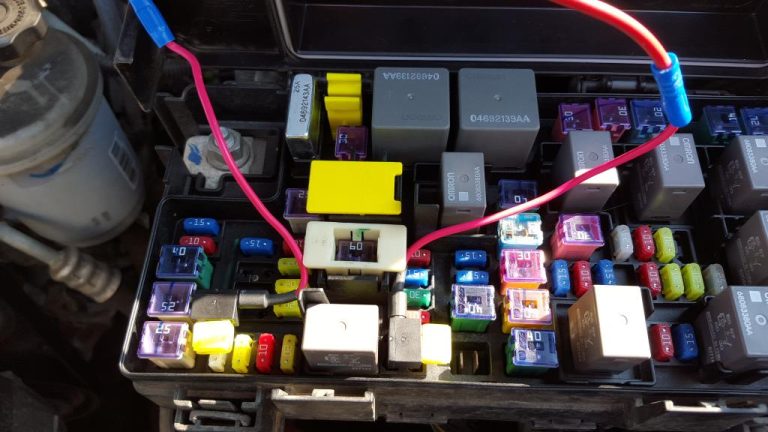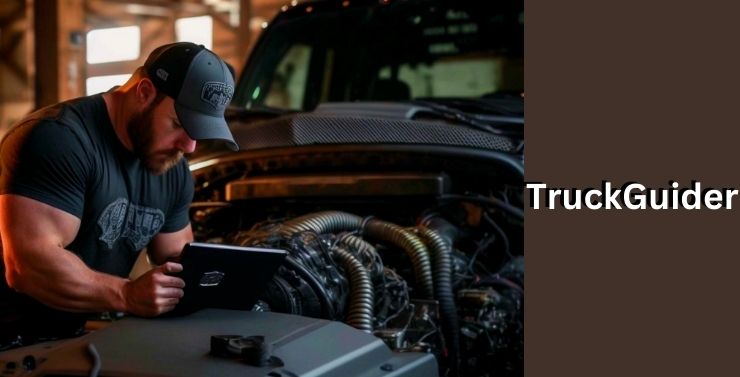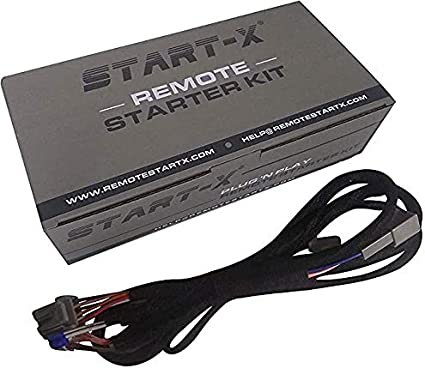Ram 1500 Exhaust Manifold Replacement
“Is the dreaded ‘Hemi Tick’ haunting your Ram 1500? You’re not alone, and we’ve got the solution: Ram 1500 Exhaust Manifold Replacement. In this guide, we’ll cover:
- Cost and Labor Estimates
- Symptoms of an Exhaust Manifold Leak
- Common Mistakes to Avoid
- Step-by-Step Replacement Guide
- Signs of a Successful Replacement
Get ready to tackle this issue head-on and boost your truck’s performance!”
Ram 1500 Exhaust Manifold Replacement Cost and Labor Estimates
The cost of replacing an exhaust manifold on a Ram 1500 pickup truck varies depending on a number of factors, including the specific model and year of the truck, the type of exhaust manifold being installed, and the labor rates in your area. However, in general, you can expect to pay between $557 and $714 for the parts and labor associated with replacing an exhaust manifold on a Ram 1500.
The labor time for replacing an exhaust manifold on a Ram 1500 is typically between 3 and 4 hours. However, this can vary depending on the experience of the mechanic and the specific model and year of the truck.
Here is a more detailed breakdown of the costs and labor estimates for replacing an exhaust manifold on a Ram 1500:
Parts:
- Exhaust manifold: $368-$476
- Exhaust manifold gasket: $43-$43
- Other miscellaneous parts (bolts, nuts, washers, etc.): $20-$30
Labor:
- Labor time: 3-4 hours
- Labor rate: $50-$75 per hour
Total cost: $557-$714
Please note that these are just estimates and the actual cost of replacing an exhaust manifold on your Ram 1500 may vary. It is always best to get a quote from a reputable mechanic before having the work done.
How to Diagnose an Exhaust Manifold Leak: A Step-by-Step Guide
An exhaust manifold leak can lead to decreased fuel efficiency, increased emissions, and even damage to other components of your vehicle. Knowing how to diagnose an exhaust manifold leak can save you time and money. This guide outlines the steps to identify if you have an exhaust manifold leak and what to do next.
Symptoms of an Exhaust Manifold Leak
Before diving into the diagnosis, it’s important to recognize the symptoms that may indicate an exhaust manifold leak:
- Loud Engine Noise: A ticking or tapping noise coming from the engine, especially when it’s cold, is often a sign of an exhaust leak.
- Reduced Performance: You may notice a decrease in power, acceleration, and fuel efficiency.
- Smell of Exhaust Fumes: A strong smell of exhaust fumes in or around the vehicle can be a red flag.
- Check Engine Light: In some cases, an exhaust manifold leak can trigger the check engine light.
Tools Needed
- Mechanic’s stethoscope or a length of rubber hose
- Flashlight
- Protective gloves and eyewear
- Jack and jack stands (if needed)
Steps to Diagnose
- Safety First: Make sure the vehicle is on a flat surface and the engine is turned off. If you need to lift the vehicle, use a jack and secure it with jack stands.
- Visual Inspection: Open the hood and use a flashlight to inspect the exhaust manifold for any visible cracks, holes, or signs of wear.
- Listen for Leaks: Start the engine and let it idle. Use a mechanic’s stethoscope or a length of rubber hose to listen for leaks. Place one end of the stethoscope or hose near your ear and the other end near the manifold. A leak will produce a hissing or tapping sound.
- Feel for Leaks: With the engine running (be cautious as components will be hot), you can also feel around the manifold for any escaping air. Make sure to wear protective gloves for this step.
- Check for Carbon Buildup: Black soot around the manifold is a sign of an exhaust leak. This is usually more visible when the engine is cold.
- Check Gaskets and Seals: Inspect the gaskets and seals between the exhaust manifold and the engine block. If they appear damaged or worn out, they could be the source of the leak.
- Computer Diagnostics: If you have access to an OBD-II scanner, you can check for any codes that may indicate an exhaust leak or related issues.
What to Do Next
If you’ve identified an exhaust manifold leak, the next step is to determine whether it can be repaired or if the manifold needs to be replaced. Small cracks might be repairable, but larger issues usually require a new exhaust manifold.
Diagnosing an exhaust manifold leak is a straightforward process that requires a bit of time and some basic tools. Once you’ve identified the issue, you can proceed with the appropriate repairs to ensure your vehicle is running efficiently and safely.
Common Mistakes to Avoid During Exhaust Manifold Replacement
When replacing the exhaust manifold on a Ram 1500, even experienced DIYers can run into issues that can turn a straightforward repair into a complicated, time-consuming endeavor. Here are some common mistakes to watch out for:
1. Skipping Safety Precautions
- What Happens: In the rush to get started, some people forget basic safety measures like using jack stands or wearing protective gear.
- How to Avoid: Always prioritize safety. Use jack stands to secure the vehicle and wear protective eyewear and gloves.
2. Not Properly Inspecting the Parts
- What Happens: Failing to inspect the new exhaust manifold and other parts for defects before installation can lead to immediate failure.
- How to Avoid: Always inspect new parts for any defects or damages before you start the installation process.
3. Ignoring Penetrating Oil
- What Happens: Some DIYers try to remove old bolts without applying penetrating oil, which can result in broken bolts.
- How to Avoid: Always use a penetrating oil like PB Blaster on rusty or stuck bolts and give it time to work.
4. Over-tightening Bolts
- What Happens: Over-tightening can strip the threads or even crack the new manifold.
- How to Avoid: Use a torque wrench and follow the manufacturer’s torque specifications.
5. Not Checking for Leaks Post-Installation
- What Happens: After going through the trouble of installation, some people forget to check for leaks.
- How to Avoid: Always run the engine and inspect for any signs of leaks before considering the job complete.
6. Neglecting to Replace Gaskets
- What Happens: Reusing old gaskets can lead to immediate leaks.
- How to Avoid: Always use new gaskets when installing a new exhaust manifold.
7. Forgetting to Align the Collector First
- What Happens: If the collector is not aligned first, you may find it difficult to align the manifold properly.
- How to Avoid: Always start by aligning the collector to support the manifold, making it easier to install the other bolts.
8. Not Following a Bolt Tightening Sequence
- What Happens: Failing to follow a specific sequence can lead to uneven pressure, causing warping or leaks.
- How to Avoid: Follow a star pattern or the manufacturer’s recommended sequence when tightening bolts.
9. Ignoring Broken Studs
- What Happens: Leaving broken studs in the engine block can cause alignment issues and leaks.
- How to Avoid: Always extract broken studs from the engine block before installing the new manifold.
10. Skipping the Test Drive
- What Happens: Without a test drive, you may miss issues that only become apparent under driving conditions.
- How to Avoid: Always take a short test drive to ensure that everything is working as it should.
By being aware of these common mistakes and knowing how to avoid them, you can make your exhaust manifold replacement go as smoothly as possible.
How to Replace the Exhaust Manifold on a Dodge Ram 1500: A Comprehensive Guide
Replacing the exhaust manifold on a Dodge Ram 1500 is a common repair, especially for older models. The notorious “Hemi tick” is often a sign that your exhaust manifold may need attention. This guide provides a step-by-step walkthrough on how to replace the exhaust manifold.
You can also check out the video:
Tools and Materials Needed
- Jack and jack stands
- 8mm and 10mm sockets
- Flathead screwdriver
- PB Blaster or similar penetrating oil
- New exhaust manifold kit
- Heat shield
- New bolts and studs
- Wire feed welder (optional)
- Pliers or channel locks
Preparatory Steps
- Jack Up the Truck: Safely elevate the truck using a jack and secure it with jack stands for added safety.
- Remove the Tire: Take off the tire to gain access to the wheel well.
Accessing the Exhaust Manifold
- Remove Wheel Well Plastic: The next step is to remove the interior wheel well plastic. This is held in place by various 8mm bolts and auto body clips. Use an 8mm socket for the bolts and a flathead screwdriver to pry out the clips.
- Expose the Engine: Once all bolts and clips are removed, the plastic will easily come off, exposing the engine and giving you access to the exhaust manifold.
Preparing for Removal
- Identify Bolts and Studs: Locate the bolts on the collector and the heat shield studs that need to be removed.
- Apply Penetrating Oil: Spray PB Blaster or a similar penetrating oil on all bolts and studs. Allow it to sit for about 10 minutes to loosen the rust and grime.
Removing the Heat Shield
- Loosen Heat Shield Bolts: Use a 10mm socket to loosen the bolts holding the heat shield in place.
- Check for Broken Studs: If the heat shield moves while you’re trying to loosen the bolts, it’s likely that a stud has broken. If the stud is protruding from the block, it can often be removed with pliers.
- Remove Heat Shield: Once all bolts are removed, you can take out the heat shield. You may need to maneuver around various engine components, but it should come out with a bit of effort.
Removing the Old Exhaust Manifold
- Spray More Penetrating Oil: Give the bolts another spray of PB Blaster and let it sit.
- Remove Collector Bolts: Locate and remove the bolts on the exhaust flange coming off the collector. These are usually 14mm bolts.
- Remove Manifold: Once all bolts are removed, you can take out the old exhaust manifold. This may require some maneuvering around engine components.
Checking for Additional Issues
- Inspect for Warping: Place a straightedge against the old manifold to check for warping. A warped manifold can cause the bolts to break and should be replaced.
- Check for Broken Studs in Block: Before installing the new manifold, make sure there are no broken studs left in the engine block. If you find any, they will need to be extracted.
Installing the New Exhaust Manifold
- Preparation: Before installing the new manifold, make sure to prep it by checking that it comes with new bolts, studs, and exhaust bolts. This ensures that you’re not reusing old, potentially damaged hardware.
- Place the New Manifold: Carefully lower the new exhaust manifold into position. The driver’s side can be particularly challenging due to the presence of the steering column and AC lines.
- Align the Collector: The first step in securing the new manifold is to align the collector. This helps support the manifold, making it easier to install the other bolts.
- Hand Thread Bolts: Start by hand-threading one bolt to hold the manifold in place. This will allow you to align the gasket and the rest of the bolts without having to hold up the manifold.
- Insert New Studs: Once the first bolt is in place, proceed to hand-thread two or three more of the new studs. This will help you align the gasket with both the manifold and the engine block.
- Torque Down Bolts: After all bolts are in place and the gasket is aligned, you can begin to torque down the bolts. The recommended torque is 18 foot-pounds, and it’s advisable to follow a star pattern for even distribution of pressure.
Reinstalling the Heat Shield
- Place the Heat Shield: Once the new manifold is securely in place, you can reinstall the heat shield. The heat shield will bolt onto the studs at the ends of the new manifold.
- Secure the Dipstick Mount: Don’t forget to secure the dipstick mount, which attaches to the heat shield.
- Install Collector Bolts: Finally, move back to installing the bolts on the collector to complete the manifold installation.
Additional Tips
- Broken Studs: If you encounter broken studs in the engine block, you may need to weld a nut to the end of the stud to extract it. This is a delicate operation and should be done carefully to avoid damaging the threads in the engine block.
- Use Quality Parts: Always opt for quality replacement parts to ensure longevity and better performance.
- Safety First: Always prioritize safety by using jack stands and keeping your work area clean and organized.
Replacing the exhaust manifold on a Dodge Ram 1500 is a challenging but rewarding project. With the right tools and a bit of patience, you can save a significant amount on labor costs and gain the satisfaction of completing the job yourself. This guide aims to provide you with a comprehensive set of instructions to make your DIY project as smooth as possible. Happy repairing!
Signs of a Successful Replacement: Indicators of a Job Well Done
After you’ve invested time and effort into replacing the exhaust manifold on your Ram 1500, you’ll naturally want to confirm that the job was successful. Here are some indicators that can help you ascertain the effectiveness of your replacement:
1. Absence of Ticking or Tapping Noises
- What It Means: One of the most common symptoms of an exhaust manifold leak is a ticking or tapping noise. If this noise is gone after the replacement, it’s a good sign that the job was successful.
2. Improved Engine Performance
- What It Means: A faulty exhaust manifold can lead to reduced engine performance. If you notice that your truck is running smoother and has better acceleration, it’s likely that the new manifold is doing its job.
3. No Smell of Exhaust Fumes
- What It Means: An exhaust manifold leak can result in the smell of exhaust fumes in or around the vehicle. The absence of this smell post-replacement is a positive indicator.
4. No Check Engine Light
- What It Means: In some cases, an exhaust manifold issue can trigger the check engine light. If the light turns off or stays off after the replacement, it’s a good sign.
5. Visual Inspection
- What It Means: A post-replacement visual inspection that shows the new manifold, gaskets, and bolts are all in good condition and properly aligned is a strong indicator of a successful job.
6. Leak Test
- What It Means: After the replacement, you should run the engine and check for any signs of leaks. No leaks mean the new manifold has been installed correctly.
7. Successful Test Drive
- What It Means: Take your Ram 1500 for a test drive under various conditions. If the vehicle performs well and shows no signs of issues related to the exhaust system, it’s a strong indicator of a successful replacement.
8. Fuel Efficiency
- What It Means: Over time, you may notice an improvement in fuel efficiency, which can be an indicator that the new exhaust manifold is functioning properly.
9. OBD-II Scan
- What It Means: If you have access to an OBD-II scanner, running a post-installation scan that shows no error codes related to the exhaust system is a good sign.
10. Peace of Mind
- What It Means: Last but not least, a successful replacement should give you peace of mind, knowing that you’ve addressed a critical component that impacts both the performance and safety of your vehicle.
By paying attention to these indicators, you can be more confident that your exhaust manifold replacement was successful and that your Ram 1500 is in good working condition.
You got it! Tackling your Ram 1500’s exhaust manifold issue doesn’t have to be a headache. With this guide, you’ve got all the know-how to diagnose the problem, estimate costs, and even do the replacement yourself. So go ahead, give your truck the TLC it deserves, and hit the road with confidence!






